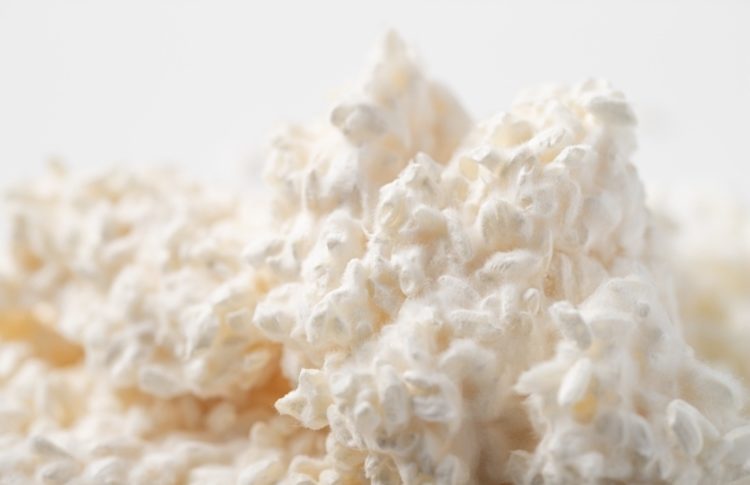Miso, soy sauce, sake, mirin, amazake… did you know there’s a “magic ingredient” common to all these traditional Japanese foods?
It’s “koji.” It looks a bit plain, like rice with white mold growing on it. However, this koji is the very foundation of Japanese food culture, a national treasure often called the “national fungus” (kokkin), that imparts deep umami and nutrition to food.
“I’ve heard the name koji, but what exactly is it?” “Hearing it’s a type of mold makes me a little uneasy…” Some people might feel that way. This article will unravel the mystery of koji and explain its amazing power and how it benefits our lives from a scientific perspective in an easy-to-understand way.
Read this article and you’ll understand everything about koji!
- The true nature of koji and the koji mold
- The secret of “enzymes” that make food delicious
- The 4 health benefits of koji
- Representative fermented foods made with koji
Why is Koji the “Magic Ingredient”? The Power of Enzymes is Key
Koji is essentially steamed grains like rice, barley, or soybeans on which a type of mold called “koji mold” has been cultivated. This koji mold produces over 100 types of “enzymes,” which are the source of koji’s power.
Enzymes are proteins that have the function of breaking down or synthesizing specific substances. The main enzymes produced by koji mold are as follows.
| Enzyme Type | What it Breaks Down | What is Produced | Role |
|---|---|---|---|
| Amylase | Starch | Glucose | Creates sweetness |
| Protease | Protein | Amino Acids | Creates umami |
| Lipase | Fat | Fatty Acids, Glycerol | Enriches flavor |
In other words, koji is a “treasure trove of enzymes.” These enzymes break down the starch and protein in the original ingredients and convert them into components that humans perceive as “sweetness” and “umami.” This is the scientific reason why koji makes food dramatically more delicious.
Learn More: Koji Mold as Japan’s “National Fungus”
In 2006, the Brewing Society of Japan designated koji mold (Aspergillus oryzae) as the “national fungus.” This was to show respect for the koji mold that has contributed to Japanese food culture and industry for many years, and to demonstrate its importance both domestically and internationally. It is truly a fungus that represents Japan, nurtured in the Japanese climate.
The 4 Health Benefits of Koji
The power of koji is not just about making food delicious. The enzymes and metabolites produced by the koji mold have various positive effects on our bodies.
1. Supports Digestion and Absorption
The diverse enzymes in koji pre-digest the nutrients in food. This reduces the burden of digestion and absorption in the body, allowing for efficient nutrient intake. It is a gentle ingredient for when the gastrointestinal tract is tired or for the elderly with small appetites.
2. Improves Gut Environment
The oligosaccharides produced by koji mold serve as food for beneficial bacteria in the gut, helping them to multiply. It is also rich in dietary fiber, which stimulates bowel movements and can be expected to improve constipation.
3. Promotes Beautiful Skin
During the fermentation process of koji, B vitamins (B1, B2, B6, niacin, etc.) are produced in abundance. These vitamins maintain the health of the skin and mucous membranes and promote skin turnover. This is why “amazake,” also known as a drinkable IV, is said to be good for beauty.
4. Aids in Fatigue Recovery
The glucose produced by the breakdown of starch by koji is quickly absorbed by the body and becomes an energy source. In addition, the abundant B vitamins help with energy metabolism, leading to efficient fatigue recovery.
My Experience
When I have no appetite due to summer fatigue, I always drink homemade cold amazake. It’s surprisingly sweet even without sugar, and I can feel it seeping into my body. I am always amazed that such sweetness and nutrition can be created just by the power of microorganisms, without relying on chemical seasonings or additives.
Summary: Let’s Make Koji More Familiar
Koji is the crystallization of the wisdom of our ancestors who have long supported Japanese food culture and health. Its true nature is a “treasure trove of enzymes” produced by koji mold, which makes ingredients delicious and brings many benefits to our bodies.
Now that you understand the basics of koji in this article, you will no longer wonder, “What is koji?” As a next step, why not explore more deeply how koji mold produces these enzymes in the amazing life activity of “The Science of Koji Fermentation“? Or, to actually incorporate koji into your life, it would be good to learn practical techniques in “A Guide to Using Koji and Making Amazake.”
First, try looking for products labeled “rice koji” or “shio koji” at the supermarket. That small step should be the catalyst for changing your diet to a richer and healthier one.
References
- Koizumi, T. (2017). Fermented Foods Science. Chuokoron-Shinsha.
- Maebashi, K. (2019). Understanding Fermented Foods: The Science Behind Them. Gijutsu-Hyohron.
- Kitamoto, K. (2016). The Science of Koji. Kodansha Blue Backs.
- Ichishima, E. (2014). Koji Mold: National Fungus and Japanese Food Culture. Brewing Society of Japan.
- Tokyo University of Agriculture. (2019). Enzyme production mechanisms of koji mold. Research Report of Applied Bioscience.
- Ministry of Agriculture, Forestry and Fisheries. (2020). Traditional Japanese fermented foods and the role of koji.


